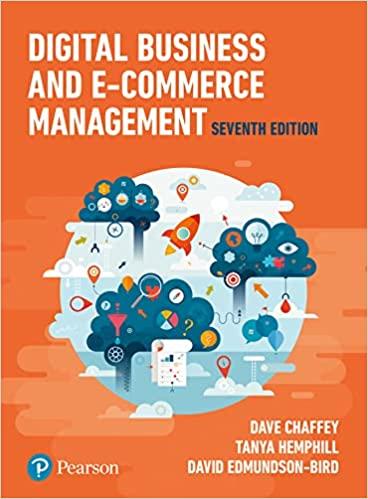Question
Case Details: At Maygramson, Inc., the largest distributor of manufacturing products in North and South America, there are several divisions that operate in silos across
Case Details:
At Maygramson, Inc., the largest distributor of manufacturing products in North and South America, there are several divisions that operate in silos across the regions. The corporate office, located in Tulsa, Oklahoma, is comfortable allowing each major division to operate independently as long as the main tenets, philosophy, mission, vision, and values are upheld. Nevertheless, it has come to the attention of the corporate office that a specific location has had a challenging time being successful as compared to all others. This location has seen high turnover over the past 2-3 years although they offer competitive salaries and benefits. Research has been conducted and it does not appear to be an issue related to the location (a popular metropolitan city with a low cost of living and many opportunities for singles or families). This location is vital to the operations and logistics for many reasons and relocating is not an option. It is vital to the organization that this division remains in this location and that performance improves to fulfill their accounts. A leader has been brought into the organization to help increase performance. Upon initial discussions with leaders in the corporate office, there is a lack of cohesiveness (both task and social), minimal productivity, and general low morale. The intent to turnover seems disproportionately high at all levels of this location. The structure of this division is currently broken up into (1) Upper Management, (2) Middle Management, (3) Individual Contributors. There are currently no teams or structured workgroups within this division of roughly 150-200 employees. As the leader full access to management and employees has been granted.
After forming teams, there is an obvious tension between several members across various teams. That is, the relationships in the office had reached such contention that conflict appears to be never-ceasing. It seems as though team members have split into two camps. The last team meeting was a disaster with four members of the team sitting on one side of the table and the other four on the other side. Tension could be felt in the air. The manager ended the meeting after only 30 minutes as it was apparent nothing was getting resolved at that time. She scheduled another meeting for the following Wednesday as she needed time to prepare for consultation. To get to the root of the issue, a meeting was scheduled with each member of the team individually to understand what was going on from their perspective. During the individual meetings with the team members, the following was learned:
- Not all team members felt that they were heard in meetings and true consensus had not been reached in the past. Rather, team members felt that they were "pushed" into coming to agreement on solutions to past problems that arose on the project.
- Team members felt that some other members of the team were getting away with not completing tasks on time or of poor quality and that was impacting the workload of everyone else.
The conflict management has proven to be beneficial thus far for the group; however, it has become obvious that there is more to this team than meets the eye. Various personality styles may be reasonable for some of the challenges the team is facing. There are many team members who seem to have a slow, methodical work pace and others who, although conflict has decreased, consistently pick up that slack. Beyond that, some members of the team seem motivated internally while others seek praise and recognition. There is currently a supervisor role on the team and getting a baseline of the current incumbents' learning agility and work-associated personality traits could help be a factor while seeking to make a recommendation for the right fit for this role. Considering if now may be an appropriate time to assess the team. Before discussions of assessments with the leadership team, the VP of Human Resources asks if they are being considered and appears to be in support of their usefulness. At this point, the VP of Operations voices his immediate concern against doing this. The remaining members of the leadership team are now vaguely concerned about what these tests may measure and how they may be helpful in the workplace.
Based on the case details and the books, Working in Teams, by Brian A. Griffith and The 17 Indisputable Laws of Teamwork by John C. Maxwell.
Remembering the audience: The leadership team of Maygramson, Inc.:
1. What is an overview of the "good" sides of using an assessment?
2. What is an overview of the "bad" sides of using an assessment?
3. Why should assessments be implemented?
4. What are recommendations to use assessments that can be given to the leadership team?
5. What is a rationale for the decision to implement assessments?
Step by Step Solution
There are 3 Steps involved in it
Step: 1

Get Instant Access to Expert-Tailored Solutions
See step-by-step solutions with expert insights and AI powered tools for academic success
Step: 2

Step: 3

Ace Your Homework with AI
Get the answers you need in no time with our AI-driven, step-by-step assistance
Get Started


